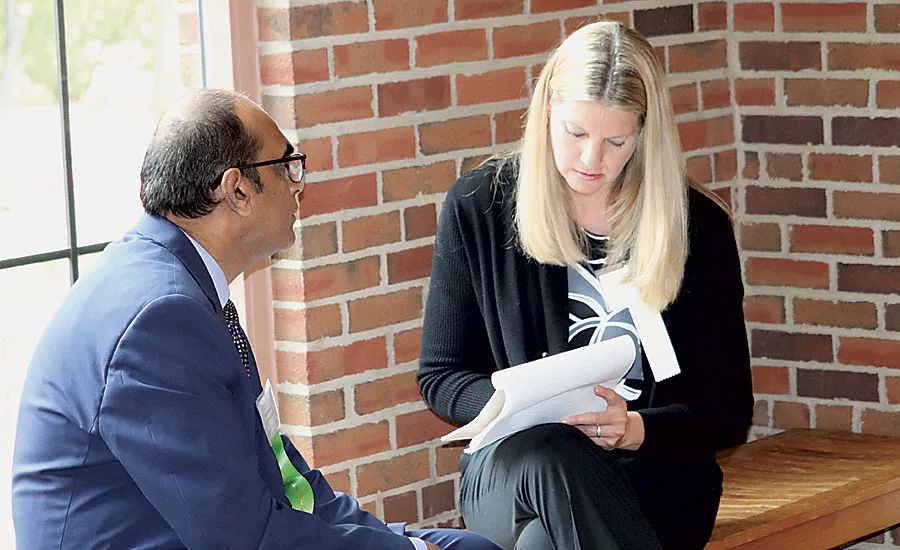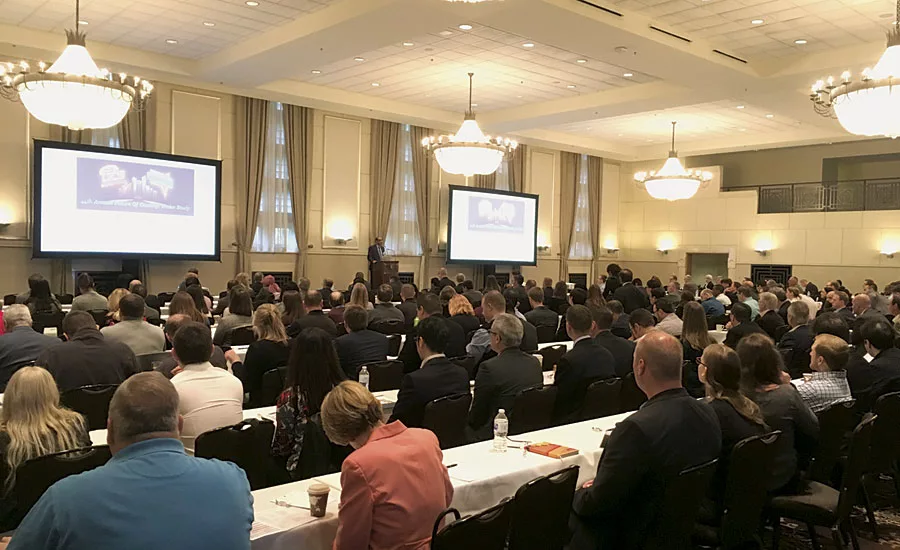FOCUS: On the Road to New Technologies


The Detroit Society for Coatings Technology (DSCT) recently held its 44th Annual Future of Coatings Under Study (FOCUS) Conference. After two years of record-breaking attendance at its traditional venue in Troy, Michigan, the event was relocated to the larger Inn at St. John’s in Plymouth. The new facility, which will be the new home for FOCUS, allows more room for sessions, exhibitors and networking. The decision proved successful, as the event enjoyed a record attendance of 355 people, 24 exhibitors, six student posters from the College for Creative Studies, 13 technical posters from Eastern Michigan University and the University of Michigan, and one student poster from Cass Tech High School.
Another change for the automotive-focused event included incorporating more presentations on coatings application rather than concentrating strictly on raw materials and formulating. “Adding more application-focused presentations is another way we have expanded our event. This was an element that was missing in the past, and it has brought more OEMs to FOCUS,” said Vijay Mannari, DSCT President and Professor at Eastern Michigan University.
Presentations under this new theme included topics such as The Role of Automotive Exterior Coatings in Autonomous Vehicle Sensor Detection, by Kevin O’Connor of Axalta Coating Systems; and Rotary Atomizer Enhancements for Automotive Interior Spraying, by Scott Clifford and John Moore of FANUC America Corp. and Axalta Coating Systems.
Also for the first time was the FOCUS Scholar Presentation, which was given by Parth Vagholkar, a student at Eastern Michigan University and recipient of a DSCT scholarship. He spoke on the Effect of Composition and Film Thickness on the Properties of Automotive Interior Clearcoats.
The keynote address was presented by John Andrew Escarsega of the U.S. Army Research Laboratory (ARL). His presentation stressed the U.S. Army’s efforts and willingness to work closely with industry and academia. Escarsega noted that their doors are wide open for collaboration as they work to meet the challenges of developing durable coatings for extreme environments while simultaneously meeting requirements to enhance survivability, such as resisting harsh chemicals like nerve or mustard gas, and concealing and camouflaging.
According to Escarsega, the ARL currently does not use clear coats – the top coat takes the brunt – and a lot of focus is placed on pre-treatment to ensure that the coating performs well. It is looking to embrace the concept of a clear coat/base coat/primer pretreatment stack up, however they haven’t been able to develop a clear coat technology yet that provides the end-use properties required. Other elements of their technical path forward include: toxic metal-free pretreatments and primers; low-solar pigmentation for a new palette of colors; expanding resins in top coat formulations to include non-isocyanate-based coatings; and developing more mold- and fungus-resistant coatings that can be easily cleaned.
FOCUS continued its tradition of including an afternoon panel discussion, which was moderated by Nancy Lockhart, Global Product Manager, Color, Axalta Coating Systems. This year’s topic was Color and Design, and panelists included Mike Crosby, Transportation Industry Manager, BASF Color & Effects; Erin Crossley, Director Global Color & Trim, General Motors; Jane Harrington-Durst, Color Styling Manager, PPG; and Paul Snyder, Chairperson, Transportation Design Department at College for Creative Studies.
Congratulations to the entire DSCT Conference Committee on organizing a stellar event. PCI is proud to be a media sponsor, and looks forward to continued growth for FOCUS.
